Which Side of Watercolor Paper to Use (Complete Guide)
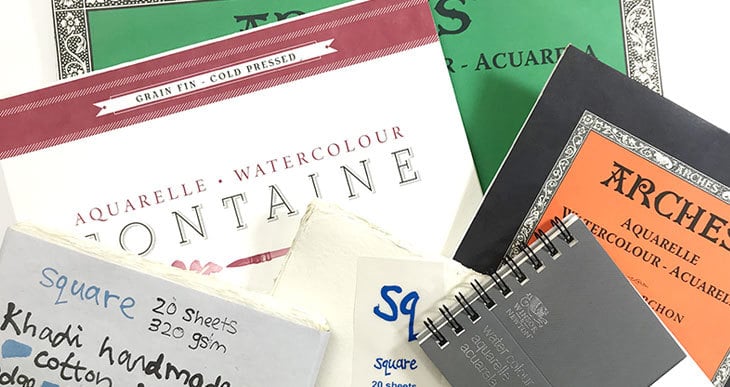
Have you ever found yourself wondering which side of watercolor paper to use? Maybe you cut up a large sheet into smaller pieces, and now you’re wondering which was the “right” side to paint on? Or if you’ve removed a sheet from a watercolor block or a pad then you’re facing the same problem…
I’ve found myself in this situation a few times. The important question being whether there’s a “correct side of the paper on which you are intended to paint.
So what side of your watercolor paper should you use? Most of the time the answer seems to be “whichever side you like”. The only real difference being a subtle variation in texture. But with that being said, there IS a difference between the two sides of the paper. And this difference varies depending on the brand and type of paper you choose to paint on.
I did a little research to find out what changes you can expect between one side of your paper and the other!
What Side of Watercolor Paper to Use
If you’re asking yourself this question then it probably means there isn’t a huge visual difference between the two sides of your paper. This is true for the majority of good quality 100% cotton papers on the market. The only noticeable difference is a slight change in texture between the two faces.
Of course, the real question we’re asking ourselves is whether there’s a discrepancy in the handling qualities of the “front” and “back” of the sheet.
The two factors which might have an influence on how the paper handles (apart from your choice of weight, surface finish, etc.), are the “tooth” or textural variations and any possible differences in the sizing of the paper sheet.
Sizing is an important feature, especially for watercolor paper. Traditional sizing uses gelatine. Sizing prevents all the color pigments from watercolors from being absorbed deep into the paper, and in this way it preserves the bright color appearance of your paints. Well sized paper also allows wet paint to transfer easily from brush to paper, and remain damp on the surface so you have longer to play with the paint.
Differences between handmade and moldmade watercolor paper
100% cotton paper can either be handmade or moldmade.
To begin with, cotton fibers are mixed with a large amount of water to make paper pulp.
Handmade papers are produced using a rectangular hand-held mold. This is basically a big flat sieve with a wire mesh stretched across a frame. This mold is dipped into a vat of cotton pulp, then sloshed around to spread the pulp evenly over the mesh. The water drains away and the pulp sticks to the wire mesh.
This sheet of pulp is then transferred to a sheet of felt for drying. This wet paper sheet is sandwiched between successive layers of felt (like a big paper and felt lasagna). A big press is used to squeeze out the water and begin the drying process.
The type of felt used is what gives watercolor paper its famous “rough” or “cold press” finish. Smooth “hot press” paper undergoes an additional treatment of being compressed by hot rollers to smooth away the texture.
I’m telling you this so you understand the difference between the two sides of traditionally made watercolor paper. As you have probably guessed, this process can produce two different surfaces to the paper.
The first is the wire side where the pulp adhered to the mold.
And the second is the felt side where the sheet was placed on the felt for drying.
Of course, both sides end up getting squeezed between sheets of felt, which reduces the difference in texture between the “front” and “back” faces. But the impression left by the wire mesh often persists. And the two sides of the paper are referred to as the wire side or the felt side.
With handmade papers this generally means you get a more important difference in surface texture on each side.
For a better idea of how this handmade process works take a look at this quick video which shows the handmade process of Fabriano paper:
Now, handmade papers are pretty expensive (they are more labour intensive than machine made papers). So most of us stick to professional quality 100% cotton paper which is made by machine. This type of paper is what we call moldmade.
Moldmade paper relies on the same method as handmade paper, but to make things easier, the whole process is automated. The sheets of watercolor paper are fabricated as one continuous very long sheet. To do this the wire mesh is in the form of a cylinder mold. This cylinder is dipped into a vat of paper pulp and rotated so that the pulp slowly adheres to the surface of the wire mesh.
The wet sheet of pulp then gets transferred to a sheet of felt, and sandwiched between felts to begin the drying process.
Note that for both handmade and moldmade paper, gelatine sizing of the sheet happens after the paper is formed and dried. The sheets get sent through a vat of liquid sizing which impregnates the cotton with gelatine, or other chemicals depending on the manufacturer.
This manufacturing process results in paper which has a less conspicuous change in texture on each face of the sheet.
So you can compare the two processes, here’s another video, this time showing Fabriano’s moldmade paper production:
So Which Side of your Watercolor Paper do You Use?
Okay… So what can we take away from all this?
The only real difference for most of us will be a slightly different surface finish on the felt side and the wire side of the sheet. Depending on the brand of your paper and the production method used, this variation in texture will be more or less pronounced.
I suggest you experiment to find out which side you prefer.
Paint handles differently on different paper textures. For example smooth hot press paper is good for detail. Slightly textured cold press paper is well suited to a wide variety of painting styles and the texture contributes to the final appearance.
Personally I use Arches paper for my finished paintings (here’s the stuff I buy at Blicks). The difference on cold press paper is very subtle indeed, but over time I’ve come to recognize each side, and I use the “front” sheet as it is presented to me when I open the pad or block.
A quick tip if you buy large sheets and cut them up. Use a pencil to mark the “back” of the sheets with a “B” so you can quickly determine which side is which!
As for sizing, there should be very little divergence between the two faces. In fact, Arches boasts that it is one of the few brands which sizes its paper with gelatine “to the core”
Can you Paint on Both Sides of Watercolor Paper?
By now I’m sure you’ve guessed the answer is yes. It really is a question of personal preference. I’ve found very little difference on both faces of Arches, Winsor & Newton, and Sunders Waterford papers.
I often use both sides for sketching. You get double the value out of each sheet!
Related reading: Best paper for watercolor painting

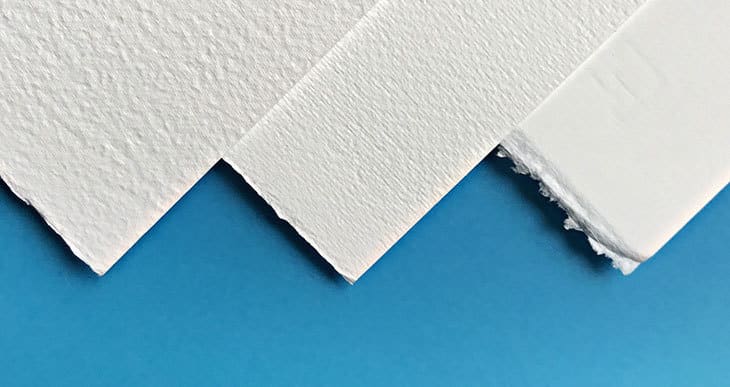
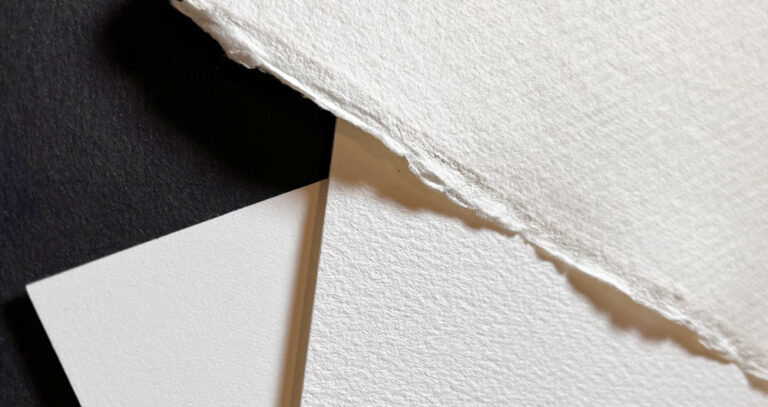
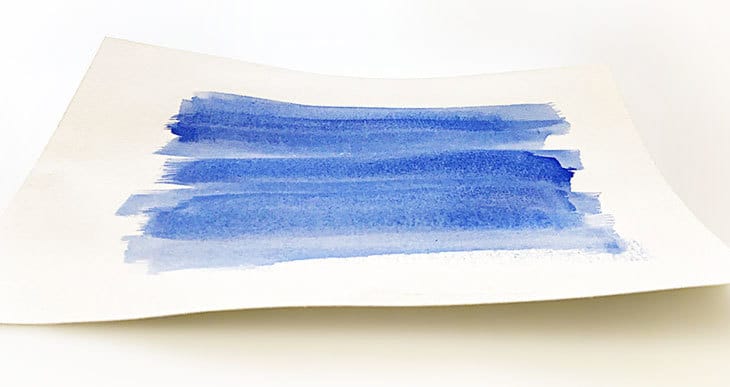
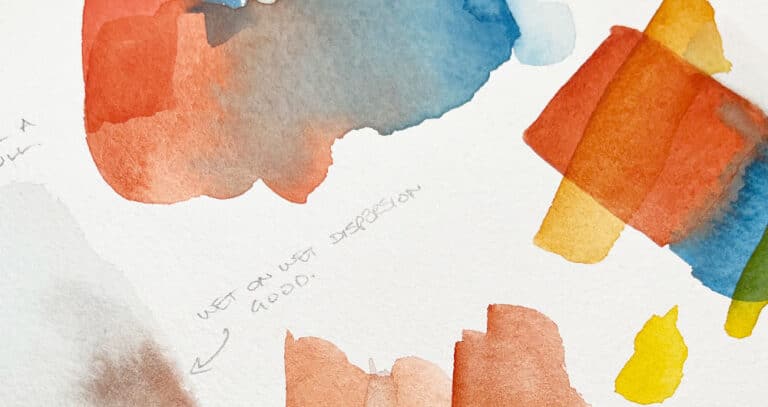
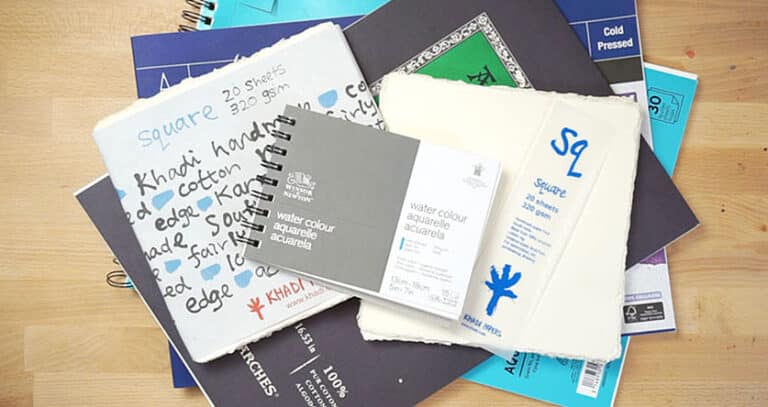

So glad that I found your site! I’m 68 years old and brand new to watercolor painting so I have lots to learn . I did sign up for your class as well as two other online classes. I’m ordering some supplies from Michaels (trying to buy good quality) but I have a question. What do you tape your paper to for ‘stretching’ prior to using it? I don’t see anything at Michaels. They don’t have Archers paper so I got Strathmore 400 series. I plan on tearing it into smaller sheets and doing lots of practicing. My goal is to pain birds (my own parrots as well as wild ones) and my dog. I look forward to learning from you!
Nancy in Wisconsin
Hi Again Nancy
I just use a plywood drawing board like this one…
The plywood is stable when wet, and I like the rounded corners which make it comfortable to use. It does get stained with paint over time, but that doesn’t bother me. I’ve tried using varnished boards in the past and i didn’t like them.
Hope that helps…
I really enjoyed the videos on making watercolor paper. It makes me appreciate the difference in cost. I am a beginner but I personally prefer to paint on cold press paper and prefer the more textured side. I appreciate all your informative article you write and hope you will continue to write more.
Think I will use the back side of the Indigo paper. The front shows the wire quite a bit
I think these are some of the best examples and explanations I’ve seen. Very impressive, young Skywalker! Really. I’m intermediate, when I am painting, so getting back into it. Have you considered selling your watercolor instructional illustrations in off? I would love to print some out to practice these techniques and larger is better, ie, on 8.5 x 11 paper.
Anyway, these rock! I’ll be a frequent flyer and think about an e-book of all of them. If you have one, please send me the link.
Really glad you’re enjoying the site Joni !
I’m working on new courses to help people at the moment, so keep an eye out !
I spent two days scouring the Internet for an answer to my problem and eventually found it in your VERY helpful tips for stretching paper. Yep, potential painting disaster averted !! I wasn’t expecting to use such wet washes on a recent painting on Arches 300gsm HP so didn’t stretch it … it buckled a lot and I was desperate to find out if it could be salvadged . All my research just kept explaining how to stretch paper BEFORE you use it … so, THANK YOU !
I have learned a lot from your wonderful site, even though I have been painting watercolours for over 20 yrs and run a weekly art class !!!! We are in the process of going back to basics, with your help, as muddy paintings were being produced, very frustrating, hopefully, this will now be a thing of the past! I will let you know how we get on, thank you. Beryl
Happy to know I could help Beryl – happy painting !
I have just found your website & really have just begun playing with watercolor. I’m currently using a “high-end” kids watercolor set! But sooo much fun. As per your suggestions, I ordered the Daniel Smith essential watercolor set for both me and my daughter-in-law, and the four add on colors you suggested. Thanks so much for you insight and instruction! It’s going to be fun to follow along with you.
That’s great ! Enjoy your watercolors Emmy !
Your blog is the best! I loved learning the technical side of paper.. until now I’ve always wondered and always just tried my best to follow which side followed the cover lol Thank you for your brilliance!!